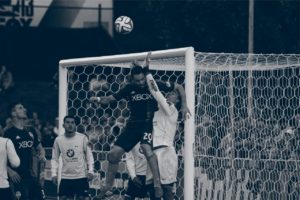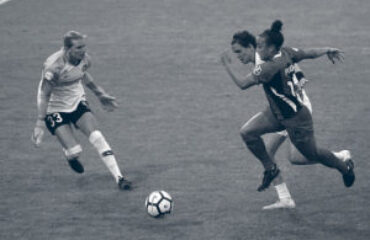THEORETICAL FRAMEWORK
Sport-related concussion is a subset of mild traumatic brain injury induced by a blow either directly to the head or to another part of the body with the force being transmitted to the head (McCrory et al., 2017). A concussion results in a short-lived disturbance of brain function that causes various symptoms and clinical signs which typically last a few weeks but, in some cases, can be more persistent and delay return to play (McCrory et al., 2017). A history of multiple concussions increases the risk of sustaining another concussion. Overall, sport-related concussions account for about 5–9% of all sports injuries (Gessel et al., 2007). In soccer, concussions represent 1–5% of all reported injuries, with an incidence of 0.004–2.44 concussions per 1,000-player-hours (Prien et al., 2018). To date, few studies have evaluated soccer-related concussions (SoRC), concussion symptoms, and/or recovery in large populations of soccer players.
STUDY OBJECTIVES
The purpose of this study was to investigate the occurrence of previous concussions and analyze possible concussion symptoms among elite soccer players.
MAIN RESULTS
After examining the concussion history and its related symptoms in 1,030 Swedish soccer players (402 women, 628 men), the authors observed that:
- Almost 35% of the interviewed players had experienced a previous SoRC and about 10% of the players had suffered a SoRC in the year before the study.
- The most common symptom presented during a SoRC was dizziness (in 82% of the players that presented the episode).
- 34% of the players continued their “ongoing activity” without a period of rest after sustaining a SoRC and only 18% of the players performed a head imaging after the SoRC.
- About 80% of the players reported a persisting symptom (> 24 h) following a re-incidence of SoRC.
- The higher the number of previous concussions, the higher the prevalence of persisting symptoms.
CONCLUSIONS
In contrast to the evidence-based recommendations, this work revealed that more than one-third of the players continued to play after sustaining a concussion. The outcomes of the study highlight the negative effects of multiple concussions as an association was demonstrated between the number of previous concussions and the incidence of persisting related-symptoms.
FSI STATEMENTS
- Soccer players should not continue their regular activities after a concussion episode.
- Specialized medical staff should carefully evaluate players’ conditions after a suspected SoRC incident.
- Recurrent SoRCs present a higher incidence of persisting symptoms and, consequently, require longer recovery time.
- Due to the high prevalence in soccer players, a deeper discussion regarding this issue is strongly required to better define medical treatments, prevention programs, and return to play policies in order to minimize the negative consequences of SoRC.
Gessel, L. M., Fields, S. K., Collins, C. L., Dick, R. W., & Comstock, R. D. (2007). Concussions among United States high school and collegiate athletes. Journal of athletic training, 42(4), 495.
McCrory, P., Meeuwisse, W., Dvorak, J., Aubry, M., Bailes, J., Broglio, S., … & Davis, G. A. (2017). Consensus statement on concussion in sport—the 5th international conference on concussion in sport held in Berlin, October 2016. British journal of sports medicine, 51(11), 838-847.
Prien, A., Grafe, A., Rössler, R., Junge, A., & Verhagen, E. (2018). Epidemiology of head injuries focusing on concussions in team contact sports: a systematic review. Sports medicine, 48(4), 953-969.





